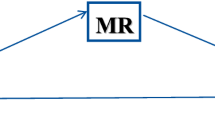Abstract
Adaptive modulation and coding (AMC) is widely used in modern communications which attempts to predict the best available rate and select the most suitable modulation and coding scheme (MCS) by estimating the real-time channel quality to obtain higher throughput of communication system. However, due to the characteristics of wireless channel fading, there are a lot of uncertainties in the communication process, which makes deviation between the channel estimate and the true value and can affect performance of AMC system. Bayesian network is an important tool to research uncertainty. This paper considers learning with the multi-entities bayesian network (MEBN) as a new framework for adaptive modulation and coding which avoids the flaw of flexibility in traditional Bayesian network (BN). Simulation results show that our algorithm has more validity in the selection MCS and lower bit error rate (BER) by considering estimate deviation in MEBN-AMC system. We also provide the further simulation results by using Bayesian structure learning and parameter learning.







Similar content being viewed by others
References
Liu, Q., Zhou, S., Giannakis, G.B.: Cross-Layer combining of adaptive modulation and coding with truncated ARQ over wireless links. IEEE Trans. Wirel. Commun. 3(5), 1746–1755 (2015)
Li, P., Zhang, H., Zhao, B., et al.: Scalable video multicast with adaptive modulation and coding in broadband wireless data systems. IEEE/ACM Trans. Netw. 20(1), 57–68 (2012)
Dialsingh, I.: Risk assessment and decision analysis with Bayesian networks. J. Appl. Stat. 41(4), 910–920 (2012)
Nodelman, U., Shelton, C.R., Koller, D.: Continuous time bayesian networks. Comput. Learning 11(2), 378–387 (2012)
Zhao, H., Jin-Zhou, X.U.: Situation assessment modeling and simulation based on multi-entity Bayesian network. Fire Control Comm. Control 38(9), 133–145 (2013)
Wang, H.R., Lao, S.Y., Bai, L., et al.: Tactical air target intention recognition based on multi-entities Bayesian network. Fire Control Comm. Control 37(10), 133–138 (2012)
Kim, T., Lim, J.T.: Queuing analysis in a multiuser diversity system with adaptive modulation and coding scheme. IEEE Trans. Veh. Technol. 60(1), 338–342 (2011)
Gho, G.H., Kahn, J.M.: Rate-Adaptive modulation and coding for optical fiber transmission systems. J. Lightwave Technol. 30(12), 1818–1828 (2012)
Sun, S., Yang, K., Wu, J., et al.: Adaptive modulation and coding for two-way relaying with amplify-and-forward protocols. IET Commun. 8(7), 1017–1023 (2014)
Kunle, A.: Least squares interpolation methods for LTE system channel estimation over extended ITU channels. Int. J. Inf. Electr. Eng. 3(4), 414–418 (2013)
Edfors, O., Sandell, M., Jan-Jaap, V.D.B., et al.: OFDM channel estimation by singular value decomposition. IEEE Trans. Commun. 27(1), 117–124 (2016)
Alkhateeb, A., Ayach, O.E., Leus, G., et al.: Channel estimation and hybrid precoding for millimeter wave cellular systems. IEEE J. Sel. Topics Signal Process. 8(5), 831–846 (2014)
Tjiam, A., Jin, J., Man, Z., et al.: System dynamics analysis of adaptive modulation problem for Rayleigh flat-fading channel. IEEE Wirel. Commun. Lett. 3(3), 325–328 (2014)
Chen, S.H., Pollino, C.A.: Good practice in Bayesian network modelling. Environ. Model. Softw. 37(17), 134–145 (2012)
Straub, D., Kiureghian, A.D.: Bayesian network enhanced with structural reliability methods: application. J. Eng. Mech. 136(10), 1259–1270 (2012)
Darwiche, A.: Bayesian networks. Commun. ACM 53(12), 80–90 (2010)
Hong, W.U., Wang, W.P., Feng, Y.: Discretization method of continuous variables in Bayesian network parameter learning. Syst. Eng. Electr. 34(10), 2157–2162 (2012)
Ratnapinda, P., Druzdzel, M.J.: Learning discrete Bayesian network parameters from continuous data streams: what is the best strategy? J. Appl Logic 13(4), 628–642 (2015)
Xiong, W., Cao, Y., Liu, H.: Study of Bayesian network structure learning. Appl. Math. Inf. Sci. 7(1L), 49–54 (2013)
O’Gorman, B., Babbush, R., Perdomo-Ortiz, A., et al.: Bayesian network structure learning using quantum annealing. Eur. Phys. J. Spec. Topics. 224(1), 163–188 (2015)
Gasse, M., Aussem, A., Elghazel, H.: An experimental comparison of hybrid algorithms for Bayesian network structure. Learning 7523(02), 58–73 (2015)
Blomer, J., Bujna, K., Kuntze, D.: A theoretical and experimental comparison of the EM and SEM algorithm. Pattern Recognit. 13(1), 1419–1424 (2014)
Deng, H.J., Yin, Q.J., Ji-Wen, H.U., et al.: Tactical intention recognition based on multi-entity Bayesian network. Syst. Eng. Electr. 32(11), 2374–2379 (2010)
Man, J., Yang, L., Man, L.W., et al.: Research on online monitoring and analyzing of interactive behavior of distributed software. J. Softw. 5(4), 361–368 (2010)
Li, X., Bilbao, S., Martínwanton, T., et al.: SWARMs ontology: a common information model for the cooperation of underwater robots. Sensors 17(3), 569 (2017)
Ravi, K., Singh, S.: Risk prediction for production of an enterprise. Int. J. Comput. Appl. Technol. Res 2(3), 237–244 (2014)
Golestan, K., Khaleghi, B., Karray, F., et al.: Attention assist: a high-level information fusion framework for situation and threat assessment in vehicular ad hoc networks. IEEE Trans. Intell. Transp. Syst. 17(5), 1271–1285 (2016)
Sun, N., Wu, J., Fan, P.: Optimum designs of high mobility wireless systems with channel estimation errors. Commun. IET 9(13), 1677–1682 (2015)
Acknowledgements
The authors would like to thank the editors and the anonymous referees for their valuable comments and suggestions. This work was supported by the National Science Foundation of China under Grant Number 61471090.
Author information
Authors and Affiliations
Corresponding author
Rights and permissions
About this article
Cite this article
Zhang, C., Lei, X., Yuan, Y. et al. A learning approach to link adaptation based on multi-entities Bayesian network. Cluster Comput 22 (Suppl 4), 8463–8473 (2019). https://doi.org/10.1007/s10586-018-1878-8
Received:
Revised:
Accepted:
Published:
Issue Date:
DOI: https://doi.org/10.1007/s10586-018-1878-8




